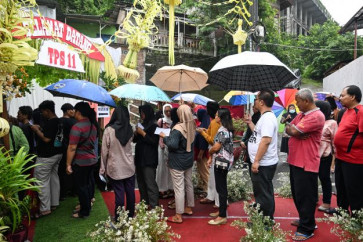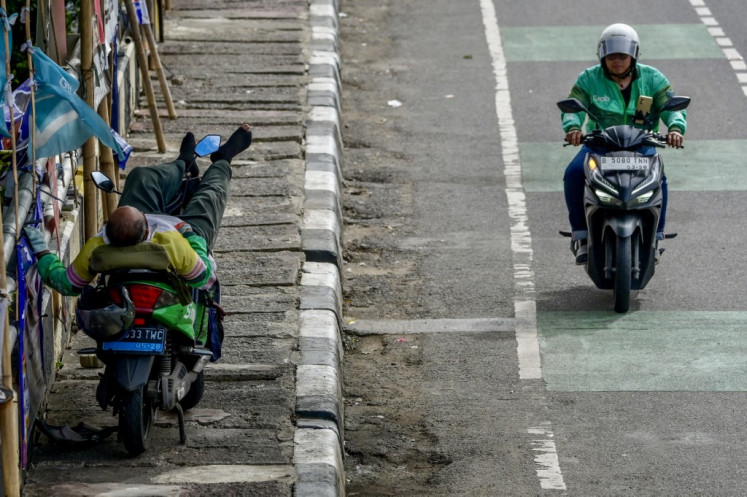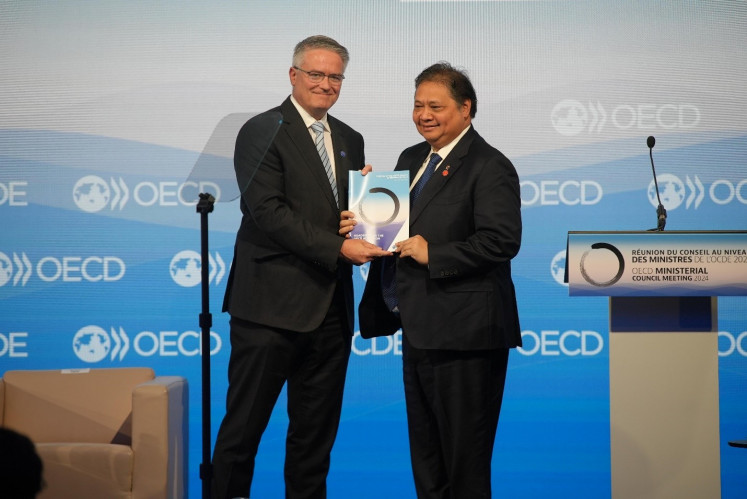Hospitals go outside Java to tap new growth potential
Several hospital chains are expanding their business to further tap into the country’s growing demand for quality healthcare services, which have emerged as one of the most lucrative in the country
Change Size

S
everal hospital chains are expanding their business to further tap into the country’s growing demand for quality healthcare services, which have emerged as one of the most lucrative in the country.
Among those that have actively expanded in recent years include Medikaloka Hermina and Mitra Keluarga Karyasehat, which target middle-income patients.
Hermina, which at present operates 33 hospitals in 21 cities across Indonesia, is building three more hospitals this
year and will add four more next year to achieve its target of having 40 hospitals by the end of 2020.
“The three hospitals that are currently under construction are expected to open in the fourth quarter,” Medikaloka
Hermina finance and strategic development director Aristo Setiawidjaja said in Jakarta on Monday.
They are located in Kendari, Southeast Sulawesi, in Pekanbaru, Riau, and in Kotabumi, Lampung.
Speaking at a press conference at the Indonesia Stock Exchange (IDX), Aristo said Hermina had recently acquired a hospital in Pekalongan, Central Java.
The company set aside Rp 800 billion (US$56 million) in capital expenditure (capex) for the acquisition and to finance the construction of new hospitals. Of the total, between Rp 300 billion and Rp 400 billion is in the form of bank loans and the rest is coming from the hospital chain’s own funds. The company spent about Rp 280 billion of the capex in the first half of this year, Aristo added.
Meanwhile, Mitra Keluarga said in a statement made available on Monday that it would start constructing a new hospital in the third quarter of this year and open its doors to the public by the end of 2020.
It currently operates 24 hospitals in nine cities in Java and plans to increase the capacity of three operated by its subsidiary, Kasih Group, which is expected to be completed in early 2020.
Mitra Keluarga allocated a capex of Rp 620 billion for the expansion, Rp 352 billion of which was spent in the first half of this year.
Both Hermina and Mitra Keluarga enjoyed an increase in total revenue in the first half of 2019.
With a bed occupancy rate of 70.6 percent in the same period, Hermina booked some Rp 1.79 trillion in net revenue, an 18 percent rise year-to-year (yoy), and a net profit of Rp 162.6 billion, a 63.7 percent yoy increase.
More than half of Hermina’s revenue came from patients covered by the National Health Insurance (JKN) program, which is managed by the Health Care and Social Security Agency (BPJS Kesehatan).
“JKN patients contributed about 47 percent to our revenue growth,” Aristo said, referring to the 18 percent increase.
In addition to building new hospitals, the hospital chain plans to further expand its healthcare services with treatments focusing on cancer, diabetes and heart diseases, Aristo said.
Meanwhile, Mitra Keluarga booked a net revenue of Rp 1.5 trillion in the first half of this year, a 15.9 percent increase from the same period last year, and a net profit of Rp 397 billion, a 16.29 percent rise yoy. Its occupancy rate reached 63.9 percent during that period.
The revenue growth was partly due to a rise in dengue fever cases earlier this year and an increase in the number of JKN patients.
According to Jasa Utama Capital analyst Chris Apriliony, healthcare service providers listed on the stock market should have good prospects ahead, thanks to a lack of hospitals in highly populated areas of Indonesia, particularly in rural and remote areas.
He added that the uneven distribution of both medical equipment and medical professionals in such areas were hindering hospital groups like Hermina and Mitra Keluarga from expanding their businesses.
Moreover, such groups should consider prospective patients’ purchasing power, he said.
“Partnering with the BPJS could be important for hospitals operating in rural or remote areas,” he said.
According to the Health Ministry, Indonesia, with a population of over 260 million in 2017, has 2,867 hospitals with around 350,000 beds, meaning that one only bed was available for every 743 people. (asp)









